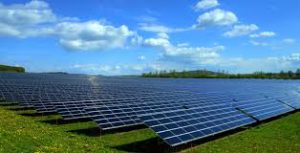On Wednesday, 7th of June 2017 wind and solar plants fed a new record high into the British and German grids and covered around 40 to 60 percent of the electricity demand, respectively.

The actual time of the feed-in record from wind and solar plants in Germany was in the quarter between 13:30 and 13:45 while there occurred a new feed-in record from renewable energies at close to 20 GW in the UK at noon on the same day as well (Source: Montel). More than 50 percent of the UK’s electricity demand at that point in time has been covered by carbon-free energy sources. Figure 1 depicts the generation of the UK on 7th of June, where especially the high wind feed-in is obvious.
Figure 1: Feed-in according to technology on 7th of June 2017 in UK (Data source: National Grid, own illustration)
High feed-in by wind also led to negative power prices for the first time in the UK during the night hours of the 7th of June 2017. According to the power exchange APX, the half-hourly day-ahead auction delivered negative prices during 2 am and 3 am. With 1.8 EUR/MWh, the lowest price in the hourly day-ahead auction however did not go below zero.
With slightly over 52 GW of input by solar and wind at 13:30 the previous record of 44 GW was exceeded as well. In total the German feed-in from renewables peaked at over 63 GW on Wednesday. Around 20 GW were supplied by solar plants, 28 GW by onshore wind power, 4.5 GW by offshore wind power, 4 GW by hydropower and 5.5 GW by biomass. Conventional power plants generated the residual load (the electricity demand that cannot be covered by renewables), in particular lignite and nuclear power plants were used due to their low marginal costs as shown in figure 2.
Figure 2: Feed-in according to technology on 7th of June 2017 in Germany (Source: Energy Charts)
Despite the high feed-in from renewable energies the electricity price on June 07 did not fall below zero. It is possible to explain this behavior with the relatively high consumption of 50 to 80 GW during the day. The high utilisation of renewable energies with extremely low marginal costs still put pressure on the electricity prices at the spot market of EPEX spot. This fact becomes evident in figure 3 which shows the daily average prices of electricity during the first week of June 2017. The average price for electricity was on Wednesday 07 June 2017 with 13.31 EUR/MWh below the average of other days of this week.
Figure 3: Daily peak (orange) and baseload (grey) prices for Germany in the first week of June 2017 (Source: EPEX Spot)






